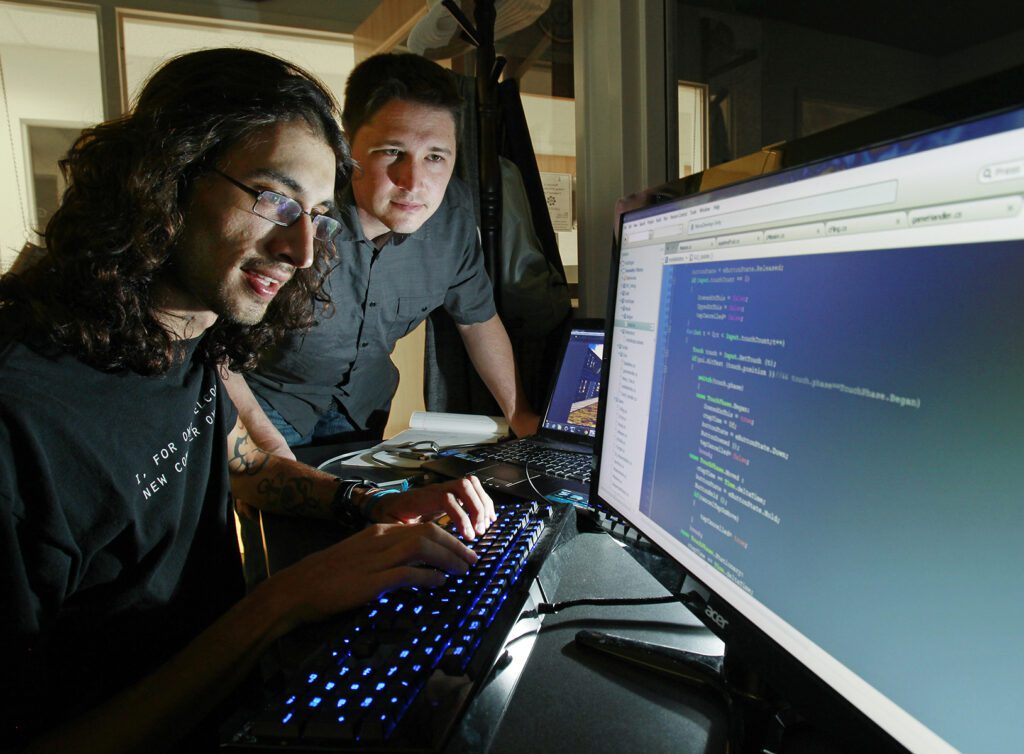Game designers and coders collaborate closely to create successful and innovative games that engage players. Designers create the vision, concept, and game mechanics while coders write the code that makes it a reality. Collaboration and communication between the two is crucial, and they use pre-built software frameworks, such as Unity, to work more efficiently. Game development can be complex and challenging, with technical limitations, budget constraints, and time pressures. However, designers and coders continue to work together to overcome these challenges and create new and exciting games that will captivate and entertain players for years to come.
Game Designers and Coders: Working Together to Create Amazing Games
Games have become one of the most popular forms of entertainment in recent years. From action-packed shooters to puzzle-solving adventures, games offer a unique and immersive experience unlike any other. But have you ever wondered how these games are made? Behind every successful game, there is a team of game designers and coders working together to create something truly amazing.
The Role of Game Designers
Game designers are responsible for creating the concept and overall vision of the game. They are the ones who come up with the game’s storyline, characters, game mechanics, levels, and objectives. They are also responsible for making sure that the game is fun and engaging for the players. Game designers work closely with other members of the development team, including coders, artists, and sound designers to bring their vision to life.
Game designers use a variety of tools and techniques to create their designs. They may use storyboarding, prototyping, and playtesting to refine and improve their ideas. They also use software tools such as Adobe Photoshop, Maya, and 3DS Max to create the game’s characters, levels, and other assets.
The Role of Coders
While game designers come up with the vision and concept of the game, coders are responsible for making it a reality. Coders write the code that makes the game function. They are responsible for creating the game’s engine, which is the software that powers the game. They also write the code that controls the game’s graphics, physics, collision detection, and artificial intelligence.
Coders use a variety of programming languages, depending on the game’s platform and engine. Some common programming languages used in game development include C++, Java, Python, and Unity C#. Coders work closely with game designers and other members of the development team to ensure that the game functions according to the vision and meets the technical requirements.
Collaboration between Game Designers and Coders
Game designers and coders work closely together to create a cohesive and engaging game. They collaborate throughout the entire development process to ensure that the game meets the vision and technical specifications. Game designers and coders also communicate with one another regularly to provide feedback and make necessary changes to the game’s design and code.
One important aspect of collaboration between game designers and coders is the use of game engines. Game engines are pre-built software frameworks that provide the underlying technology and architecture for the game. They offer a variety of tools and features that allow game designers and coders to work together more efficiently.
One of the most popular game engines for indie game development is Unity. Unity offers a wide range of features and tools for game designers and coders, including a visual editor, physics engine, and scripting tools. It also offers cross-platform support, allowing developers to create games for multiple platforms such as Windows, Mac, Linux, iOS, Android, and consoles.
Challenges Faced by Game Designers and Coders
Game development can be a complex, time-consuming, and challenging process. Game designers and coders face a variety of challenges, including technical limitations, budget constraints, and time pressures. They must also keep up with the latest trends and technologies in the gaming industry to create innovative and engaging games. Game designers and coders must work together to overcome these challenges and create successful games.
Conclusion
In conclusion, game designers and coders work together to create amazing games that captivate and entertain players. They each have important roles to play in the game development process, and their collaboration is crucial to creating a cohesive and engaging game. Games will continue to be an important part of the entertainment industry, and the collaboration of game designers and coders will continue to drive innovation and success in the field.
